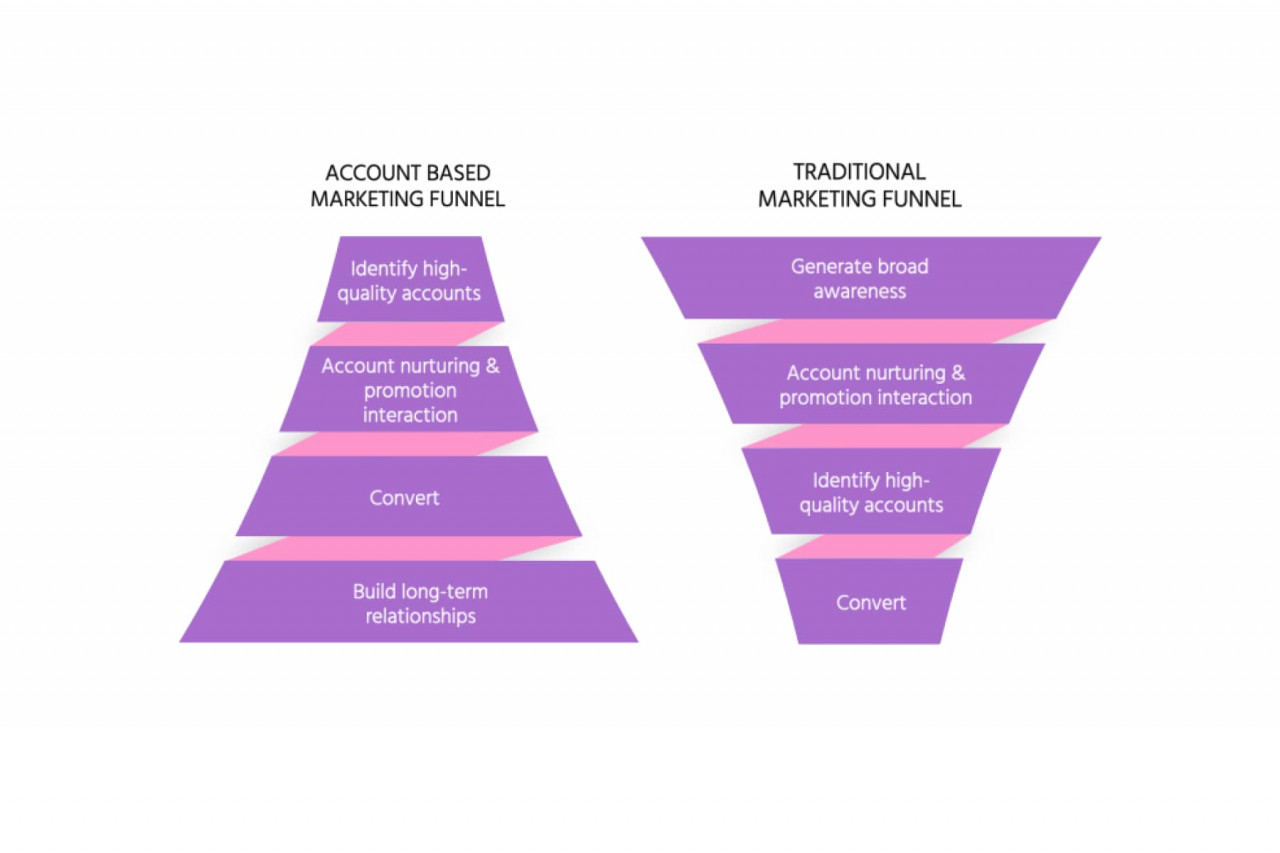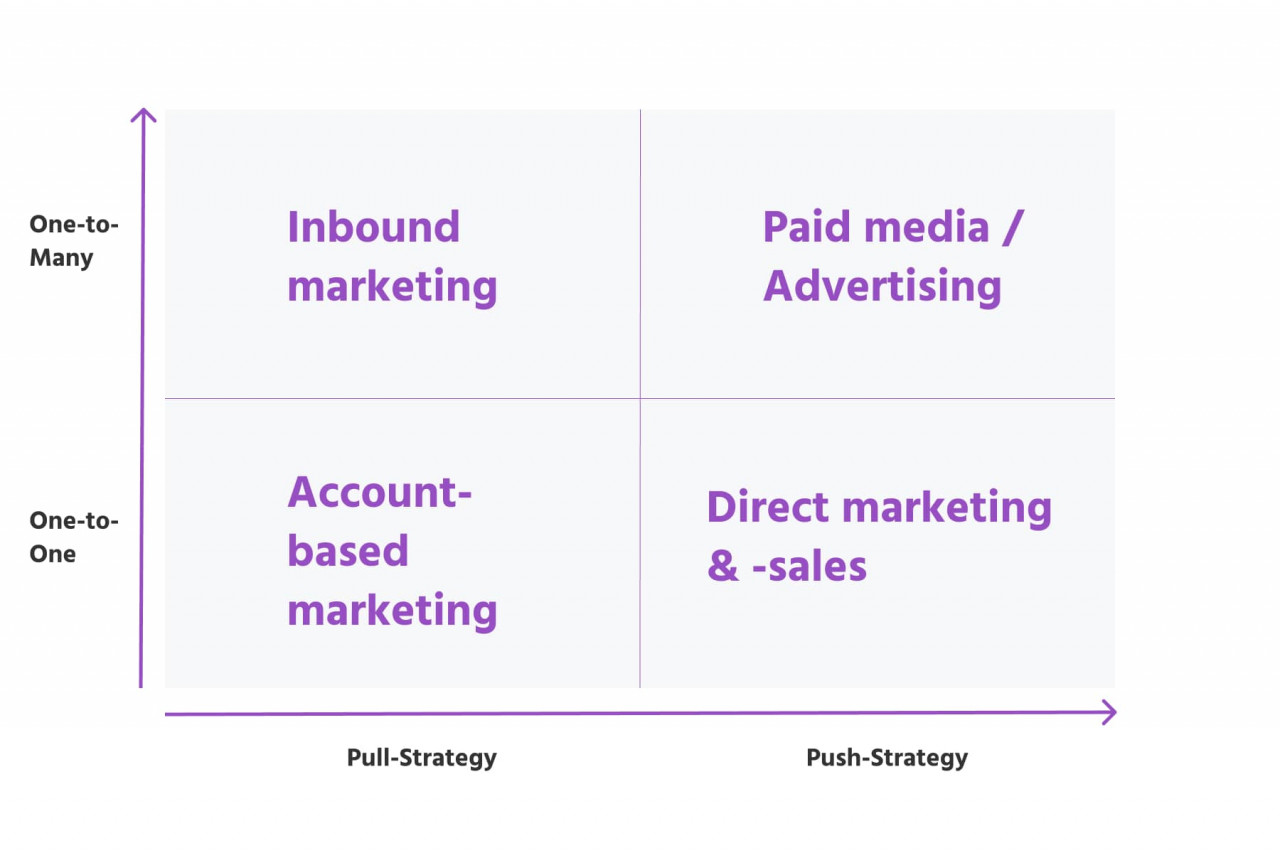Select your language
Blog
Dive into the world of Marketing Automation:
Practical & helpful knowledge that makes your daily life with Marketing Automation easier!
What is Account-based marketing? - Part 1
In this marketing, marketing & sales work together to create personalised buying experiences. The focus is on high-quality accounts that have been identified by both. In other words, you select a specific group of potential customers who will target your company simultaneously through various channels along the phases of the buying process. Quality is therefore more important than quantity - certain customers should be acquired through targeted, personalised campaigns. Account-based marketing - as the marketing name suggests, is based on a potential or existing account and is aimed at companies mainly in the B2B sector.
What is the difference to other marketing strategies?
You do not address an entire market with your content, but at ABM you treat individual customers as individual markets. Especially in the B2B sector, this strategy is becoming more and more common. Because your potential customers are companies, often more than one person is involved in a purchase decision and the processes become very complex with very large accounts.
Difference between ABM-Funnel and traditional marketing funnel
- Instead of addressing a broad mass with your content (traditionally), you determine the recipients & the corresponding lead (ABM) at the beginning.
- Afterwards, both funnels are about nurturing contacts & promoting interactions.
- With ABM you want to convert your contacts into customers & try to build a long-term relationship, whereas with the traditional funnel you only select the quality leads at this point.
So what do you need for ABM to work and for you to be able to target your recipients from the outset? You need suitable data, which you must have in advance. This means that you first need to know your persona exactly - with very precise ideas about their characteristics & needs as well as your own goals, which you formulate best according to the SMART rules. This way you know which data you should focus on.
Which advantage do you have?
- Comprehensive & interdisciplinary
Your marketing and sales departments must work more closely together and share their know-how to win the contract. This will also facilitate cooperation in retrospect.
- Measuring success becomes easier
You work with a manageable number of clients. It's easier to keep an overview and measure success. However, this does not make the measurement itself any easier than with other marketing strategies.
- Personalisation
You have individual contacts that you address in a targeted and personalised way with your communication. This significantly increases the probability of interaction.
- Optimise your marketing budget
By focusing on specific contacts, you can keep spreading loss to a minimum.
- Improve customer experience
The aim is that you can expand & strengthen your relationship with each contact in each touchpoint. By focusing on just a few contacts and optimising the customer experience for them, this has a positive effect on the relationship.
Where can you classify ABM?
According to Robert Weller, a content strategy coach, inbound marketing & account-based marketing are both pull strategies. On the other hand, there are push strategies like paid media / classical advertising as well as direct marketing & sales.
What is the difference between Inbound Marketing & ABM?
- ABM focuses on individual accounts, while inbound marketing refers to a wider range of potential customers.
- ABM aims to gain contacts with a larger profit, while inbound marketing focuses on more contacts but with smaller profits.
- ABM is particularly important for accounts where the decision depends on many people and the process is therefore much more complex. In contrast, inbound marketing involves one or a few decision-makers.
If you would like to know more about inbound marketing, read our article "Inbound Marketing - With additional value to more website traffic". Inbound Marketing & ABM can also complement each other and can therefore be used in combination.
Conclusion
Is ABM just a trend, or will it continue to gain ground in the coming years? ABM needs data. That means there are technical requirements for ABM to work. Only in recent years have rapid technological developments made it possible to implement ABM efficiently. In May 2019, 12.1% of the B2B marketers of German industrial & service companies fully & completely agreed with the statement "ABM will replace classic outbound marketing in the next few years". 31.1% largely agreed with the statement. (Statista.com - Status 08.07.2020) Interest in ABM has clearly increased in recent years. In the USA certainly even stronger than in the German-speaking European region. It's therefore likely that the trend will continue to rise.
Account-based marketing is suitable for the B2B market and especially for companies that work with large accounts - i.e. very large companies as customers. It's important to note that with ABM, the boundaries between marketing & sales become more blurred, as they have to work very closely together and therefore there is no clear handover of the lead.
The second part of this blog series is about how account-based marketing works. We dive into the 5 different phases in ABM (Identify - Expand - Engage - Advocate - Measure). Furthermore, I will introduce you to who ABM is suitable for and what a tool must contain.
Are you ready for the leap into Marketing Automation? Read here how our approach is or send us an email with your questions. We look forward to hearing from you.









